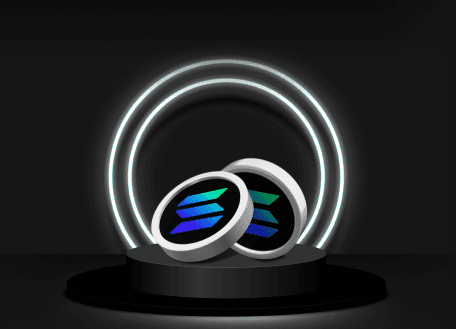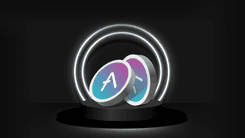- Home
- News and analysis
- Articles
- Solana: A Crypto Slayer in Disguise?
Solana: A Crypto Slayer in Disguise?


Cryptocurrency marks the beginning of a whole new era for finance and technology. However, as innovative as blockchain is, it faces certain challenges, including high fees, scalability issues, low bandwidth and more. Several projects in the DeFi space are competing to become the first web scalable blockchain and provide users with the best experience by addressing these common problems. One of them, gaining momentum in the DeFi community, is Solana. This censorship-resistant, open-source blockchain uses a comprehensive set of technologies to increase scalability and create a robust network for building decentralized applications (dApps).
Popular cryptocurrencies such as Bitcoin and Ethereum have notable limitations in terms of scalability. Why? It is impossible to scale the time it takes to reach a consensus on a particular order of transactions. Therefore, alternatives such as Solana have emerged as promising solutions for such challenges.
Solana's sunny days aren’t over! Here we take an in-depth look at what Solana is, how it works, why there is so much interest in Solana, and how you can make the most of this new, fresh world.🚀
What is Solana?
The Solana (SOL) platform was founded back in 2017 by Anatoly Yakovenko. Before founding Solana, Yakovenko worked at Qualcomm. Together with Eric Williams and Greg Fitzgerald, they created a new process to solve traditional bandwidth problems that existed in Bitcoin and Ethereum blockchains.
In a nutshell, Solana is a blockchain platform known for its speed and efficiency. SOL tokens are its native cryptocurrency and are used to pay transaction fees. Since its launch in 2017, Solana has become one of the largest cryptocurrencies in the world. It is one of the top 10 cryptocurrencies by total market value, according to CoinMarketCap.
What makes Solana stand out?
What sets Solana apart is its incredible speed. The company claims that the system can process up to 710,000 transactions per second. By comparison, the same Bitcoin network conducts between 3 and 7 transactions per second. It seems like a cosmic figure even compared to the most recent, third-generation cryptocurrencies like Cardano. However, so far, the claims are at odds with the reality. The maximum speed, which was actually achieved, is still lower and amounted to 60,000 transactions per second.
It’s also worth noting that Solana is a Layer 1 blockchain. That is, all transactions are on the same blockchain layer. When it comes to Layer-1 solutions, they change the rules of the blockchain’s protocol to increase its transaction speed and capacity and thus accommodate more users and data.
All transactions on the platform are made in SOL, their native cryptocurrency. It serves both to pay commissions online, maintain smart contracts, and create decentralised apps.
Why SOL is being called the "killer" of ETH? Solana is considered by many to be Ethereum's top competitor (aka ‘the killer’). In addition to its high throughput, Solana could compete with Ethereum and other blockchains for several reasons:
- ⚡ Solana is many times faster than its competitor and hundreds of thousands of times cheaper. According to Messari.io, as of early June 2022, the average transaction fee on Ethereum is $9.26, while in Solana it is $0.00025. Blockchain is especially beneficial for NFT collectors since it is necessary to use a smart contract to process non-fungible tokens, which increases the gas fee in Ethereum even more.
- 💡🦾The project is better suited to creating smart contracts, decentralised applications, and NFT solutions because of the programming language used which allows developers to easily and quickly port computer protocols and applications from other blockchains to Solana.
- 🪐The project ecosystem is expanding much faster. While Ethereum is still launching more projects, it faces many challenges due to poor scalability, low bandwidth, and expensive transactions. That's why Solana became the third-largest blockchain in terms of blockchain assets in just one year of full operation; managing to raise more than $14B in its wallets. According to DefiLlama, as of early June 2022, the total money placed in Solana blockchain-based DeFi projects stood at $4B.
- ⚖️Solana is more stable and uses fewer resources. All blockchains perform the same tasks - storing and exchanging data. Nevertheless, when the number of users on the network exceeds several hundred million active users, it becomes an incredible burden, which can slow down or even stop its operation as a result. Solana has solved this problem by using the Turbine Protocol. The Turbine Protocol facilitates the transfer of data to blockchain nodes by splitting up all the data into multiple ‘chunks’. This allows Solana to solve the bandwidth problem, as well as improve the overall ability to conduct transactions faster.
- ♻️The high environmental friendliness of the blockchain. Solana uses the Proof-of-Stake (PoS) mechanism, which is much more energy-efficient than the competing algorithm. This means that Solana is much preferable to PoW blockchains such as Bitcoin, Ethereum, Dogecoin, etc.
Is SOL a good investment?
Solana cryptocurrency delivers many revolutionary solutions that help make Solana one of the most efficient Layer 1 blockchains on the globe. The Solana team launches many unconventional innovations, each focused on bandwidth, decentralisation, and security.
With the speed and low cost it offers, Solana is positioning itself as a faster and cheaper alternative to Ethereum. SOL has grown significantly since its inception, and analysts believe the project still has a long way to go.
However, Solana is a high-risk investment. Cryptocurrencies are highly volatile, and many seemingly great projects tend to be going bust.
SOL in the Markets Today
The Solana price is currently hovering around the $33-$35 range, having had a decent increase over the last week from the $25 support level which is where the bulls took control.
A low had formed near $26 where the price started a steady increase, forming a clear move above the $30 resistance level. SOL’s price also broke above a major bearish trend line on the 4-hour chart and any more gains from here could send the price of Solana towards the next major resistance zone of $50.
On the downside, a break below $30 could very well ignite a sharp decline where we might see prices head back to the $25 level.
The recent price increases could have been subject to the latest news of the Solana NFT marketplace ‘Magic Eden’ closing a series B funding round for about $130 million. This new capital will be used to expand the marketplace and certainly be bullish for the Solana ecosystem.
Solana at NAGAX
If you're still wondering where to buy SOL, wonder no more! NAGAX makes it easy for traders to buy, sell, and trade Solana and other hot cryptos.
Follow the three steps below to learn how to buy SOL on NAGAX:
- Sign up for a NAGAX account.
- Buy SOL instantly with a Debit/Credit Card or USDT through the intuitive NAGAX Wallet or Exchange.
- That’s it - you’re good to go!
When it comes to buying crypto, you have a lot of options. You can directly purchase $SOL with a credit/debit card or USDT in the NAGAX Wallet. To learn more about buying crypto at NAGAX, please click here.
Discover Solana with NAGAX today! 🚀

Summary
- Among next-generation blockchains, Solana solves key problems such as low network speeds, high transaction costs and security issues.
- Solana is a fast cryptocurrency that many see as a potential alternative to Ethereum.
- Solana’s native cryptocurrency, SOL, has a market capitalization of more than $12 billion.
- Impressively, SOL is one of the top 10 coins on the crypto charts.

Important Notice: Any news, opinions, research, analyses, prices, or other information contained on this feed are provided as general market commentary and do not constitute investment advice or solicitation for a transaction in any financial instrument or unsolicited financial promotions. All material published on the website is intended for informational purposes only. The market commentary has not been prepared in accordance with legal requirements designed to promote the independence of investment research, and therefore, it is not subject to any prohibition on dealing ahead of dissemination. We do not make any warranties about the completeness, reliability, and accuracy of this market commentary. Past performance is not an indication of possible future performance. Any action you take upon the information on this feed is strictly at your own risk, and we will not be liable for any losses and damages in connection with the use of this feed.
Risk Warning: Cryptocurrencies are highly volatile and trading can result in the loss of your invested funds. Before investing you should be aware that cryptocurrencies may not be suitable for all investors. You should therefore carefully consider whether trading or holding digital assets is suitable for you in light of your financial condition and not invest money that you can not afford to lose.



